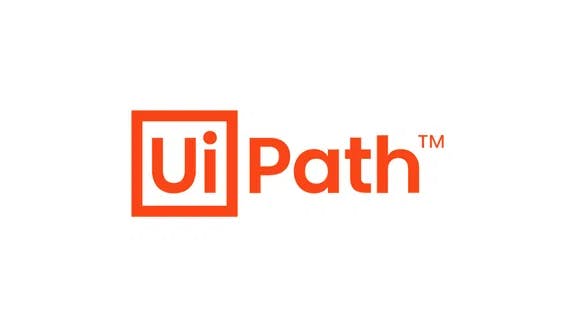
How Codam Coding College fights biased AI
Open to all levels of education
The modern-looking building suggests otherwise, but until a few years ago the home port of Amsterdam Codam Coding College was a training building of the Navy. The barracks made way for iMac-filled halls, in which a diverse group of people can follow intensive programming training free of charge.
Things are a little different at Codam than at other training programme providers. The only requirement is that you are over 18. Preparatory training is irrelevant. They find out your aptitude during a ‘Piscine’, an intensive selection month in which the candidates are thrown into the proverbial deep end. In this way, they hunt out untapped potential.

Someone who makes grateful use of this is Angeli, 22. Due to serious physical and mental health problems, she dropped out of high school in her fifth year of pre-university education. She had no starting qualification and was not eligible to attend mainstream higher professional and university programmes. Now she’s found her niche. “I’ve never been suited to the conventional learning system. The only subject I was really good at was maths. There I was allowed to do assignments during the explanation. That’s exactly the approach they take here: you can just do it. I also get a lot of support from my classmates if I’m in bad health. Because you have to learn from each other, it creates a very good sense of community.”
A gamified curriculum
What immediately strikes you at Codam is that a lot of things are lacking: no teachers, no lectures, no semesters, no timetables, and no accredited diploma. So, what Codam does offer? A project-oriented curriculum in which students review each other’s work. The entire curriculum is gamified: students reach levels by completing projects. If you submit a project, a number of random students are selected to review your work. They can be at a higher or lower level than you. If you are at level 7, you should be able to defend your work against someone at level 10 and explain it to someone at level 2.

Sayf, 37, is a candidate from the latest Piscine. “Codam is unique in the Netherlands. I would like to retrain, because I feel that as a financial employee I am at a dead end. I expect that many tasks within my sector will be taken over by technology, and I want to remain relevant. I’ve always worked with a computer, but I had no idea what a computer really is. Now I’m learning exactly what a computer does.”
A higher bar, but with room for error
The concept originated in France, where pioneer École 42 opened its doors in 2013. The idea of a programming course that is accessible to everyone free of charge was soon imitated in other countries. Tech entrepreneur Corinne Vigreux brought the educational concept to the Netherlands, where the first students started in 2019.
Oscar, 25, was in the first Piscine. After having completed his foundation course at the HBO (university Bachelor programme), he decided that that form of education did not suit him. He was looking for a different challenge, which is when he stumbled upon Codam. “In a regular programme, you have to deal with a fixed tempo and curriculum. I could keep up with that by doing something 1 day a week. Here at Codam, I can follow my own pace and the material is not offered up ready-made.”
He believes the absence of teachers does not have a negative effect on the quality of education. On the contrary: “There’s a much more serious way of looking at what you’re doing. In my entire year at HBO, only once did a teacher really look at my code. Here all projects have to be checked by several fellow students. The bar here is much higher, for example with regard to the security of your code. What I would get an A for at HBO is the minimum here. It’s also quite normal here to do something new once in a while. You often make a number of errors the first time, which you correct until it’s right.”
Diversity prevents one-sided software
By breaking down barriers such as tuition fees and preparatory training requirements, Codam tries to appeal to as many potential students as possible. According to Lisa Stamm, Head of Communication, this is vital in a world in which AI is playing an increasingly important role.
“If you put a problem on the table and you always let the same group of people look at that problem, you get the same answer over and over again. It stands in the way of innovation. Technology is often developed by the same people. An example is a soap dispenser that was developed by a group of white people. When they put their hand under it, the dispenser worked fine. So, it went to market and was installed in all sorts of places. But if a black person held their hand under it, nothing came out.
With a diverse team, you would never have had that problem. If you have AI algorithms written by a one-sided group, you will by definition get distortions in your system, regardless of the purpose. Our way of training can help us avoid developing the future of AI in a biased way.”

At the moment, Codam’s diversity policy still focuses mainly on women. In mainstream tech education, only 10 percent of the intake is women. By accepting proportionally more women for a Piscine, the school hopes to improve the male-female balance within tech education. From the selection month onward, the best are allowed to continue, regardless of gender. However interestingly enough, men and women seem to preform equally well in the selection system.
Stamm: “The interesting thing is that the male-female ratio of the group that is accepted turns out to be the same as the ratio of the group that comes in at the start of a Piscine.”
There are plans to scale up in the future, but for that they need the help of politicians. Because Codam is convinced that the demand for tech talent will only increase.
Stamm: “We help students as much as we can, but as long as we are not accredited, we bear all the costs ourselves. That’s why we are now in talks with the government about funding, so that we can offer our education to more students.”
Meet Codam founder Corinne Vigreux
In 1992, entrepreneur Corinne Vigreux (1964) was one of the founders of the navigation software company that was to grow into TomTom. Since then she is considered one of the top women in the European tech world. A few years ago, she took a step back in her role at TomTom to found Codam.

Vigreux grew up in France, in a working-class suburb of Lyon. Her mother did everything she could to allow her daughter to attend the prestigious Lycée du Parc, even though it was highly unusual to attend a school outside your own neighbourhood. Good education turned out to be the key to Vigreux’s successful future. Growing up in an environment with little money and fewer opportunities was an important motivation to bring the École 42 concept to the Netherlands. With her personal foundation she makes the programme possible financially. Vigreux was appointed Officer in the Order of OrangeNassau for her work as co-founder of TomTom.
Related articles

Aigency

How the Innovation Centre for AI is creating a world-leading solutions

UvA's Natali Helberger discusses the appeal of AI studies in Amsterdam

How KIN helps firms understand their AI needs

Sensity deepfake detection

BrainCreators uses AI to help businesses embrace automation

Amsterdam's Expertise Centre uses co-creation to build applied AI

QUVA Lab cultivates computer vision

How Qualcomm makes life better with AI

